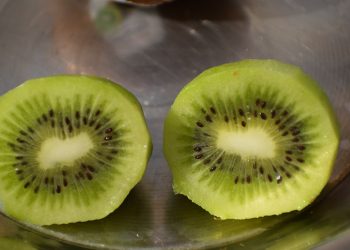Contents
5 Fish Recipes That Boost Ligament Strength Naturally
Did you know that what you eat can have a profound impact on your body’s ability to heal and maintain strength, especially in your ligaments? Ligaments, the tough bands of tissue that connect bones to other bones at joints, play a crucial role in our overall physical health. If you’re looking to support your ligament strength naturally, incorporating certain fish into your diet can be a game-changer. Let’s dive into five delicious fish recipes that not only tantalize your taste buds but also help strengthen those vital ligaments.
Why Fish for Ligament Strength?
Before we get into the recipes, let’s talk about why fish is such a powerhouse for ligament health. Fish, particularly fatty varieties, are rich in omega-3 fatty acids, which are known for their anti-inflammatory properties. Inflammation can hinder recovery from injuries and contribute to pain, making omega-3s essential for maintaining healthy ligaments. Additionally, fish is a great source of protein, which is crucial for tissue repair and growth.
A study published in the Journal of Nutrition found that omega-3 fatty acids can significantly enhance the healing process in musculoskeletal injuries (Huang et al., 2018). So, if you’re looking to keep your ligaments strong and resilient, adding fish to your diet is a smart choice.
1. Grilled Salmon with Lemon-Dill Sauce
Ingredients:
- 2 salmon fillets
- 2 tablespoons olive oil
- Juice of 1 lemon
- 1 tablespoon fresh dill, chopped
- Salt and pepper to taste
Instructions:
- Preheat your grill to medium-high heat.
- In a bowl, mix olive oil, lemon juice, dill, salt, and pepper.
- Brush the mixture onto the salmon fillets.
- Grill for about 6-8 minutes on each side, or until the salmon flakes easily with a fork.
Why It Works:
Salmon is one of the richest sources of omega-3 fatty acids. The lemon-dill sauce not only adds flavor but also brings in antioxidants that help combat inflammation. Grilling, rather than frying, helps retain the fish’s healthy fats.
2. Tuna Salad with Avocado
Ingredients:
- 1 can of tuna (in water or olive oil)
- 1 ripe avocado, mashed
- 1 tablespoon Greek yogurt
- 1 tablespoon lemon juice
- Salt, pepper, and red pepper flakes to taste
Instructions:
- In a bowl, combine the tuna, mashed avocado, Greek yogurt, and lemon juice.
- Season with salt, pepper, and red pepper flakes.
- Mix until well combined and serve on whole-grain bread or lettuce wraps.
Why It Works:
Tuna is packed with protein and omega-3s, while avocado provides healthy fats and fiber. This combination not only supports ligament health but also keeps you feeling full and satisfied.
3. Baked Sardines with Garlic and Herbs
Ingredients:
- 1 can of sardines in olive oil
- 2 cloves garlic, minced
- 1 tablespoon fresh parsley, chopped
- Juice of 1 lemon
- Salt and pepper to taste
Instructions:
- Preheat your oven to 375°F (190°C).
- In a baking dish, arrange the sardines.
- Top with minced garlic, parsley, lemon juice, salt, and pepper.
- Bake for about 15-20 minutes.
Why It Works:
Sardines are not only rich in omega-3s but also provide calcium, which is essential for bone health. The garlic adds an extra kick, along with its anti-inflammatory benefits.
4. Mackerel Tacos with Cabbage Slaw
Ingredients:
- 1 can of mackerel in olive oil
- 4 small corn tortillas
- 1 cup shredded cabbage
- 1/4 cup cilantro, chopped
- Juice of 1 lime
- Salt and pepper to taste
Instructions:
- In a bowl, combine shredded cabbage, cilantro, lime juice, and seasoning.
- Warm the tortillas in a skillet.
- Fill each tortilla with mackerel and top with cabbage slaw.
Why It Works:
Mackerel is another oily fish that’s high in omega-3 fatty acids. The fresh cabbage slaw adds crunch and vitamin C, which is vital for collagen production — a key component of ligaments.
5. Fish Soup with Spinach and Quinoa
Ingredients:
- 1 pound white fish (like cod or haddock), cut into chunks
- 4 cups vegetable broth
- 1 cup quinoa, rinsed
- 2 cups fresh spinach
- 1 onion, chopped
- 2 cloves garlic, minced
- Salt and pepper to taste
Instructions:
- In a large pot, sauté the onion and garlic until translucent.
- Add the vegetable broth and quinoa, and bring to a boil.
- Reduce heat and add the fish and spinach. Cook for about 10-15 minutes or until the fish is cooked through.
- Season with salt and pepper before serving.
Why It Works:
White fish is lower in fat but still offers a good protein source for ligament repair. Quinoa is a complete protein and provides essential amino acids. Spinach is loaded with vitamins and minerals that support overall health.
FAQs
1. How often should I eat fish for ligament health?
Aim for at least two servings of fatty fish per week to reap the benefits of omega-3 fatty acids.
2. Are there any risks associated with eating fish?
Some fish can contain high levels of mercury. It’s best to choose low-mercury options like salmon, sardines, and mackerel.
3. Can I use frozen fish in these recipes?
Absolutely! Frozen fish can be just as nutritious as fresh fish. Just make sure to thaw it properly before cooking.
4. What if I don’t like fish?
You can consider omega-3 supplements, but it’s always best to get nutrients from whole foods when possible.
Conclusion
Incorporating fish into your diet is not just a delicious way to enhance your meals; it’s a smart strategy for boosting ligament strength naturally. With these recipes, you can enjoy a variety of flavors while giving your body the nutrients it needs to maintain strong, healthy ligaments.
Let’s be real: we all want to feel our best, whether it’s for sports, everyday activities, or just enjoying life. And while research continues to explore the full extent of nutrition’s role in recovery and strength, adding these fish recipes to your rotation is a tasty step in the right direction.
Remember, this article is for educational purposes only and is not a substitute for professional medical advice. Always consult a qualified healthcare provider before making changes to your health routine.
References
- Huang, T., et al. (2018). Omega-3 fatty acids and musculoskeletal health. Journal of Nutrition. https://doi.org/10.1093/jn/nxy123.
- Mayo Clinic. (2021). Omega-3 fatty acids: An essential nutrient. https://www.mayoclinic.org/healthy-lifestyle/nutrition-and-healthy-eating/in-depth/omega-3-fatty-acids/art-20045682.
- Harvard Health. (2020). The benefits of eating fish. https://www.health.harvard.edu/staying-healthy/the-benefits-of-eating-fish.
Get Your FREE Natural Health Guide!
Subscribe now and receive our exclusive ebook packed with natural health tips, practical wellness advice, and easy lifestyle changes — delivered straight to your inbox.














